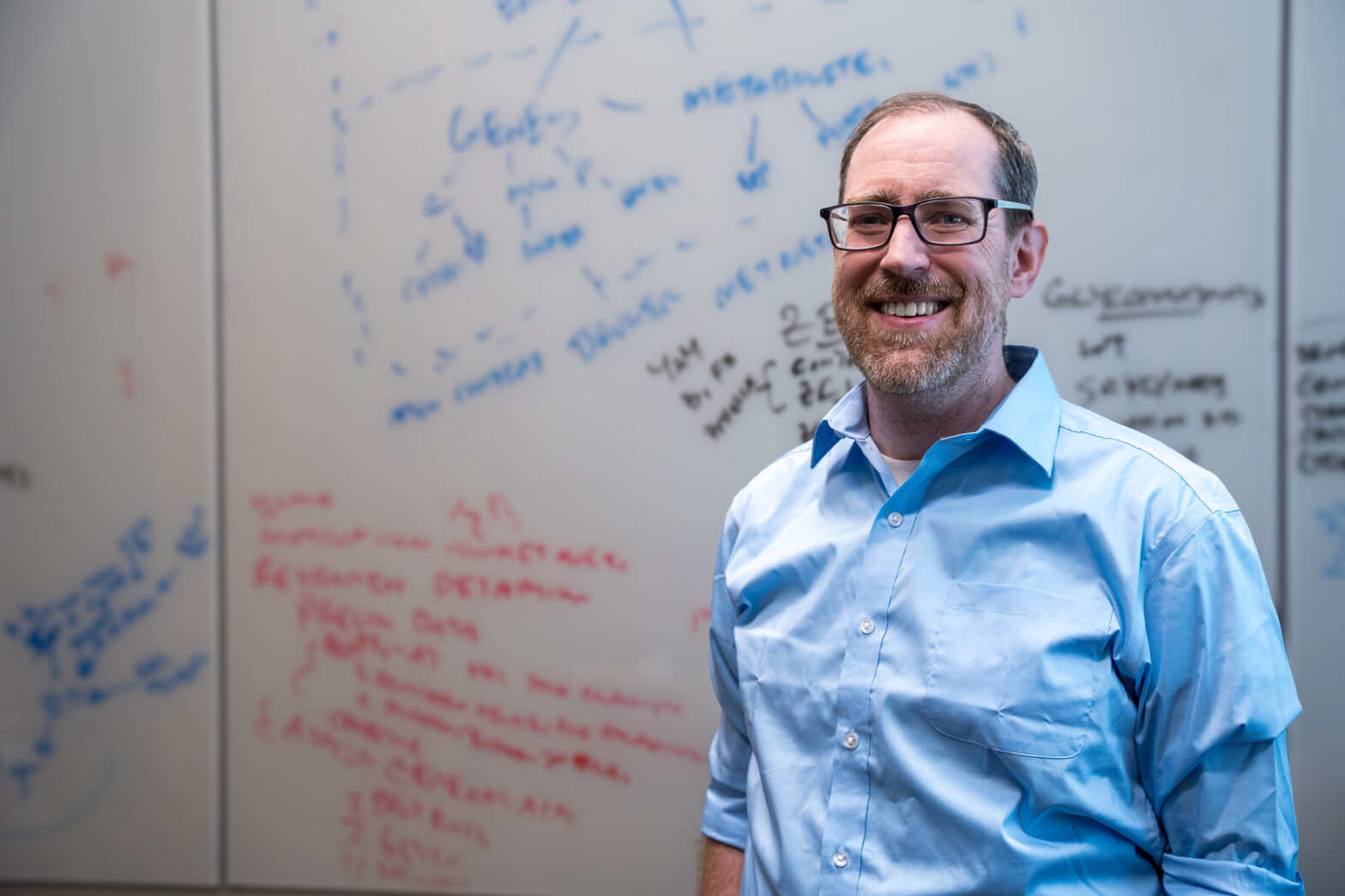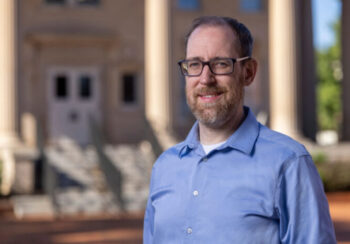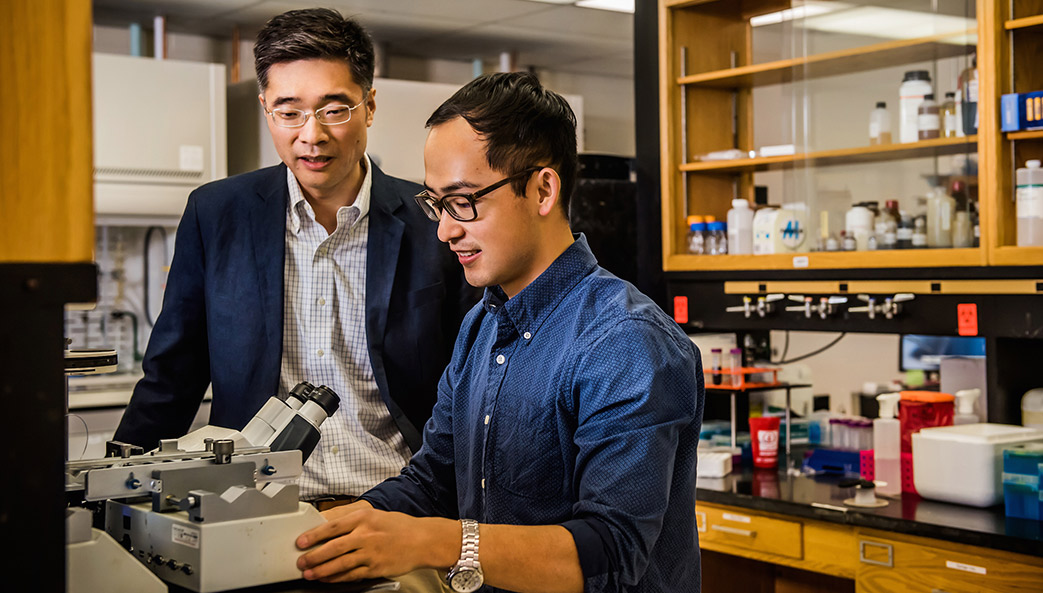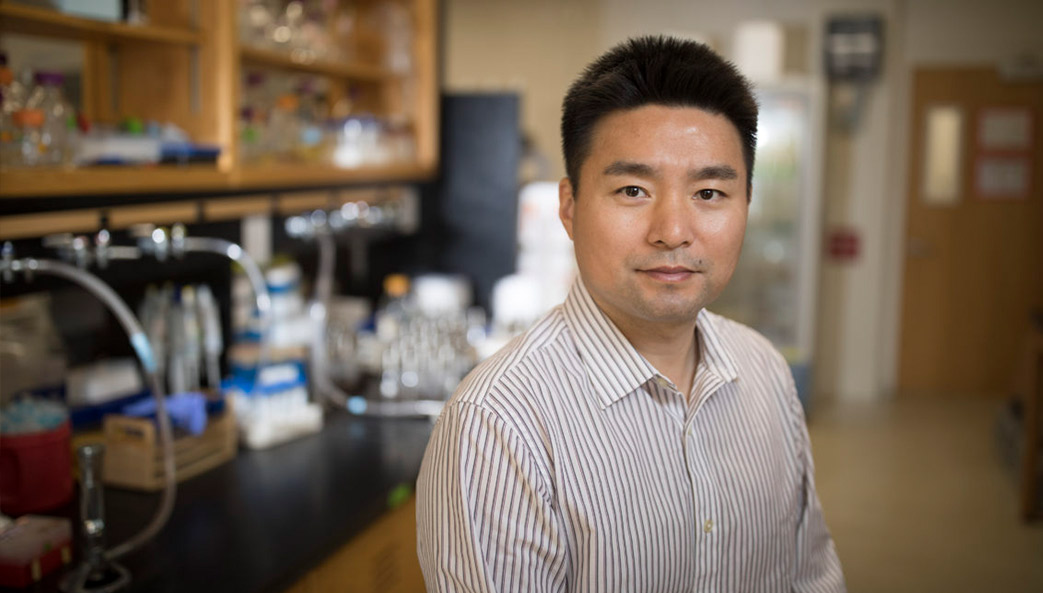Nathan Lewis joined the University of Georgia in fall 2024 as a Georgia Research Alliance Eminent Scholar in Molecular Cell Biology, with appointments in the Center for Molecular Medicine, the Complex Carbohydrate Research Center, and the Franklin College of Arts and Sciences’ Department of Biochemistry and Molecular Biology.
In this interview with Research Communications, Lewis talks about his research into cellular communication and molecular pathways, as well as the professional and personal pathways that led him to move cross-country from California to Athens, Georgia.
Research Communications: You study inter- and intracellular communication. Can you explain that in lay terms?
Nathan Lewis: The big question is: How do cells know what they need to do? We have trillions of cells in each of us, and yet despite this massive number of cells making many decisions throughout our lives, we all come out looking quite similar to each other, and we all go through the same developmental stages. When I start thinking about the scale of that, it just boggles my mind.
The cells need to be able to communicate with each other, and this has been a major area of research for decades. Researchers discovered different molecules that cells send to each other—these could be secreted proteins, or small molecules, or even little molecular packages called exosomes. However, each receiving cell needs something to receive those messages. This is done with receptor proteins, mostly positioned on the outside of the cell.
When a signal is sent from one cell to the next, the receiving cell has pathways that relay that signal into its nucleus. Then new signals are relayed to other cells. All of physiology, both health and disease, emerges from these signals.
Part of your appointment is in the Complex Carbohydrate Research Center (CCRC). Where does glycobiology come into your work?
If you look on the outside of a cell, what you see is a big furry coat of complex carbohydrates. It’s not just random chains of sugar; they have an alphabet, like how DNA has an alphabet. So if a cell sees another cell, it sees in that coat of carbohydrates many messages. Also, the signals they send to each other are largely secreted proteins, and almost all those proteins are covered in complex carbohydrates or glycans.
Why don’t we talk about that very often? The primary challenge is that the technologies to study carbohydrates are more limited. Thus, it has been difficult to figure out that language, in part since the chemistry is more difficult to work with.
Also, the glycans are more complex. When we “read” the language of DNA, it comes in a long line of A’s, C’s, T’s and G’s. You have these four letters and the pattern of them encode genes. Glycans, however, are large branching polymers, made of many different sugars. With our computational techniques, we’re good at finding patterns in lines of sequences, but once you start having branches, the necessary computational techniques are much more complex.
It’s only in recent years that we’ve seen a major improvement in machine learning and artificial intelligence to decode nonlinear sequences. Now we can finally start to crack that carbohydrate code of the messages being sent between cells and the receptors receiving the messages. These messages and receptors have messages encoded in both the proteins and the carbohydrates attached to them.
How did you come to study this physiological phenomenon?
It was a long, winding road, as with most scientists’ interests. I have been thinking for many years about the molecular scale of biology, especially how it is organized as complex systems. Specifically, all of the molecules are connected within a cell. Also, the molecules connect cells to each other. In particular, cells will communicate with each other to form a system of “connected” cells.
Early on, I was interested in all of these connections, and so I dedicated my efforts to learning how to study complex systems conceptually and mathematically. With time, the algorithms and experimental techniques all came together, so now we have the technologies to tease apart intercellular communication. The specific experimental methods, such as single-cell RNA sequencing, proximity proteomics, and other methods, all have emerged in the past decade, and now give us enough detail to study cell-cell communication.
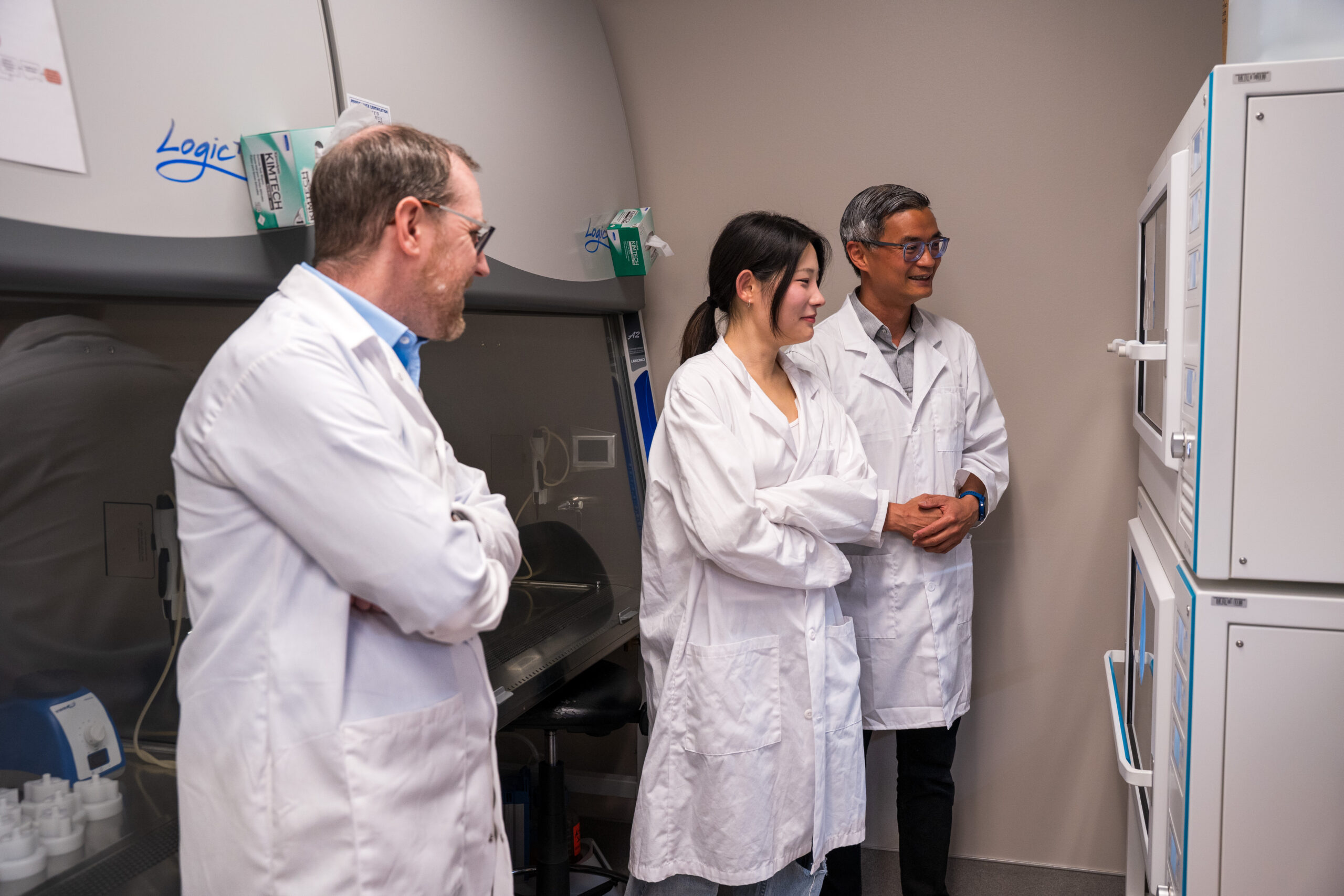
That’s a good segue to ask about methodology. Is it fair to say the kind of research you do simply would not have been possible a couple decades ago, perhaps even 10 years ago?
Correct. It was not possible. It’s exciting to see technological developments open so many avenues. This is important because most therapeutics either target the secreted proteins or the receptors. We need to understand that communication if we want to be able to address most diseases or disorders.
The CCRC, I argue, is probably the best for accounting for how the glycan code impacts cell-cell communication. Regarding the technologies needed for reading these complex carbohydrates, UGA is definitely the best in the United States, if not the best in the world.
What role did CCRC play in your decision to come to UGA?
I came from University of California-San Diego, where I was very happy. I had been approached by other universities to see if I’d consider moving. My answer was always, “Nope, don’t want to waste anyone’s time. I’m not going to move.” But I did have a few institutions in the back of my mind that, if an opportunity came up, I would at least look at it. UGA was one of those, mostly because of the CCRC.
I knew great colleagues here and had collaborated with several of them. When they asked me if I’d consider moving, I said, “Probably not,” but that was followed by, “But I’m open to talking.” All it took was bringing my wife and me out once. Even before looking at all the scientific stuff, they’d already addressed all our other concerns. It was hilarious. The moment I voiced any concern about being able to move, they would immediately have a solution!
But it really came down to the science and the resources, technologies, and know-how, which was all unparalleled in my area. And a second important and related area of my research is biomanufacturing. UGA also has an excellent biofermentation facility, which was something I was actually trying to build in San Diego. We just didn’t have the critical mass to do that there.
You’ve founded a couple companies. How do those promote impact for your research?
I love science. I love the constant learning, the constant seeking for truth and understanding of the world around us. It is fun being able to look and think about things at the molecular scale, what’s going on in that.
However, it ends up becoming even more real when you see the struggles people have because of the molecular basis of disease. For example, I have children who are neurodivergent, and when I saw the struggles they have with communication, with social interactions, school, and stuff like that, I wanted to do something. While learning about these scientific curiosities is fun and all, I wanted to do more than get a bunch of cool scientific publications. I hit a point where I wanted our discoveries to bless somebody else’s life.
So for me, it was a natural progression. When we were doing our work on engineering cells to be able to manufacture some of these complex glycoprotein therapeutics, it was natural to say, “If we are getting higher activity, more people might need lower doses of the therapeutic or they might have to get fewer doses.” If I could help improve their lives as they spend less time at the hospital, getting infusions and so forth, that would mean a lot.
Or, in other cases, we found that changing the glycans on the outside of vaccines could improve potency. We just published work in which we changed the glycans on the outside of a hepatitis C vaccine candidate and improved its activity by an order of magnitude. It only required some small carbohydrate changes. That could take a disease for which we do not have a vaccine—such as hepatitis C—and suddenly make a potent one. If you can get that onto the market, you’ve improved the lives of many, many people.
It’s not about the money; it’s about being able to impact people’s lives for good. That is motivating.



